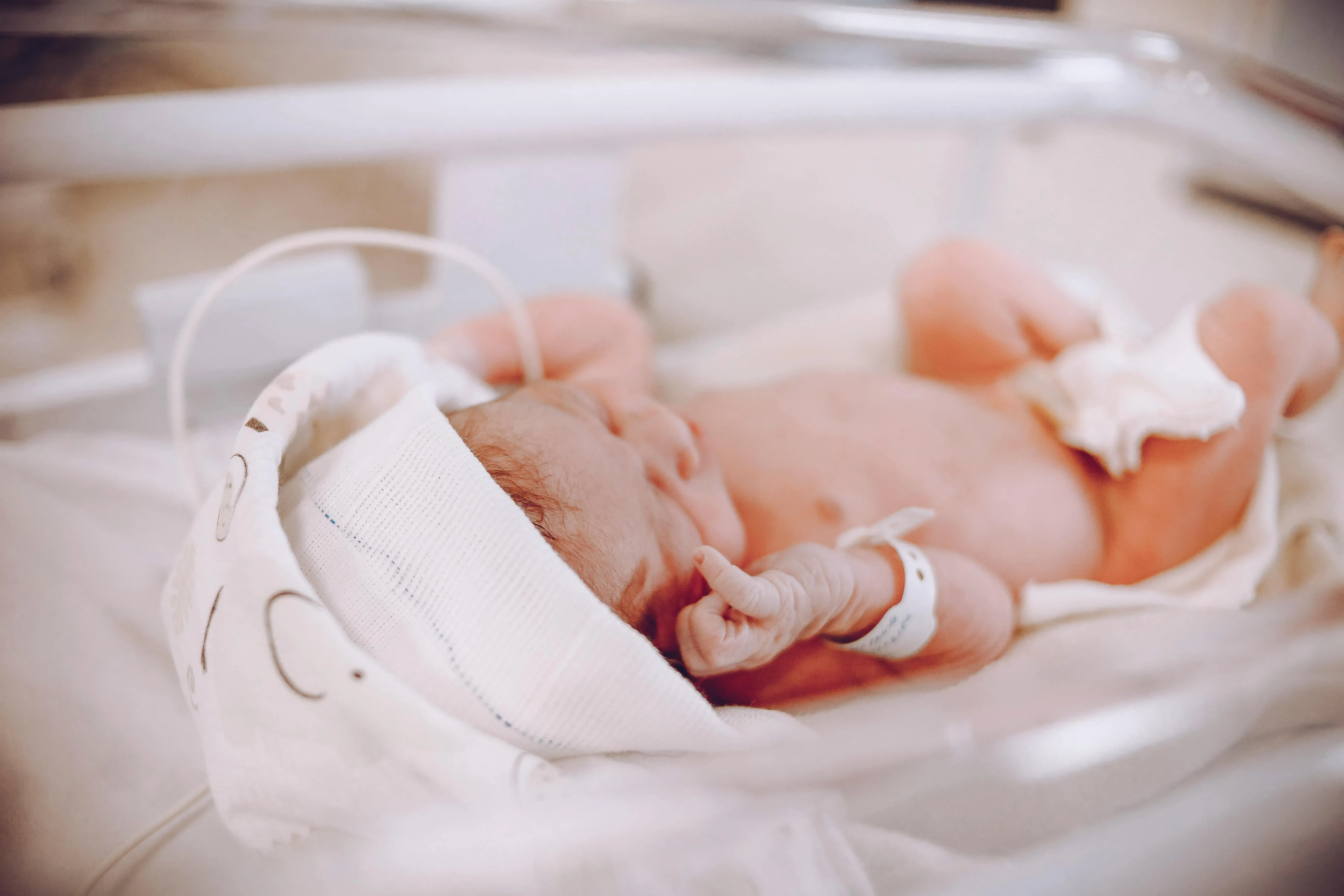Research · 10 min read
Video Analysis of Newborn Positioning During Routine Delivery Room Care
Newborn Positioning in the Delivery Room - A Video Analysis Study with Mangold INTERACT

Newborn Positioning in the Delivery Room
IMPORTANT DISCLAIMER
IMPORTANT DISCLAIMER
This article is intended exclusively for an experienced scientific audience. It is for informational purposes only, as an example of research conducted with Mangold INTERACT, and is based primarily on a single scientific study by Konstantelos et al. (2014). The content presented here does not constitute medical recommendations, treatment guidelines, or clinical practice instructions in any way.
The author and platform assume no responsibility for decisions made based on this information. This content does not replace professional medical advice, diagnosis, or treatment. All medical decisions regarding newborn care must be made by qualified healthcare professionals.
Introduction: A Critical First Decision
The first few moments of a newborn’s life are a whirlwind of activity. Amidst the flurry of assessments and interventions, a seemingly simple decision holds significant implications for the infant’s transition to extrauterine life: how should the baby be positioned? While decades of research have solidified the importance of supine sleeping for SIDS prevention [1], the optimal positioning in the immediate postnatal period remains a topic of ongoing investigation and debate. This blog post delves into a pivotal study by Konstantelos et al. [2] that sheds light on this critical issue, exploring the potential benefits of lateral positioning in the delivery room and the broader scientific context surrounding this fundamental aspect of neonatal care.
For decades, the “Back to Sleep” campaign has been a cornerstone of public health messaging, leading to a dramatic reduction in Sudden Infant Death Syndrome (SIDS) rates [3]. This has established the supine position as the standard for infant sleep. However, the delivery room presents a unique set of challenges and priorities. The focus here is on facilitating a smooth transition, ensuring adequate respiratory effort, and stabilizing vital signs. In this context, the ideal position may not be the same as the one recommended for sleep.
This post will explore the findings of the Dresden-based study, which utilized video analysis using the Mangold INTERACT software to compare supine and lateral positioning in term infants. We will examine the study’s methodology, key results, and clinical implications, while also providing a broader overview of the physiological principles at play. By synthesizing this evidence, we aim to provide a better understanding of this critical aspect of neonatal care.
The Dresden Study: A Window into Delivery Room Practice
A 2014 study by Konstantelos and colleagues from the Neonatal Research Group Dresden provided a unique and valuable contribution to the field by systematically analyzing video recordings of delivery room management [2]. This observational study aimed to answer three key questions:
- How often is delivery room management performed with term infants in a side position?
- Is routine delivery room management feasible and effective in the side position?
- Is there any discernible benefit to the side position in terms of agitation or vital parameters?
Methodology: Capturing the Unseen
The researchers recorded 187 videos of delivery room management for term infants born via C-section. Using the specialized Mangold INTERACT software, they analyzed these videos, coding for a range of variables including the infant’s position, any interventions performed (such as stimulation or suctioning), vital signs, and levels of agitation. The “Main Position” was defined as the position in which an infant spent more than 70% of their time.
Key Findings: A Case for the Side Position?
While the supine position was more common overall (91 infants vs. 63 in the side position), the study revealed several differences between the two groups:
- Stimulation: Infants in the supine position required significantly more stimulation than those in the side position (12.5% of the total time vs. 3.9%). This suggests that infants in the side position may have a more stable and efficient transition.
- Agitation: Newborns in the side position were consistently less agitated than their supine counterparts. This is a crucial finding, as excessive agitation can increase oxygen consumption and stress.
- Oxygenation: The study found a trend towards better oxygenation in side-positioned infants. Specifically, infants in the left-lateral position had significantly higher oxygen saturation values at the 8-minute mark compared to those on their right side. Furthermore, side-positioned infants tended to reach the critical 90% oxygen saturation level earlier than supine infants.
It is important to note that the study did not find a causal link between positioning and these outcomes. However, the strong association observed provides a compelling rationale for further investigation.
As the authors state: “Side position seems to be associated with reduced agitation and improved oxygenation. However, it remains unclear whether this represents a causal relationship or an association. The study supports the need for a randomized controlled trial.” [2]
This research highlights the potential benefits of a practice that is already gaining popularity in some European hospitals. By providing objective, data-driven evidence, the Dresden study has paved the way for a more nuanced and evidence-based approach to newborn positioning in the delivery room.

The Physiological Underpinnings: Why Position Matters
The findings of the Dresden study are supported by a growing body of research into the physiological effects of positioning in newborns. The transition from fetal to neonatal life involves a complex series of cardiorespiratory adaptations, and the infant’s position can significantly influence this process.
Respiratory Mechanics
The newborn respiratory system is anatomically and functionally distinct from that of an adult. The chest wall is more compliant, the alveoli are smaller and fewer in number, and the work of breathing is significantly higher. Positioning can have a profound impact on these mechanics:
- Ventilation-Perfusion (V/Q) Matching: In the supine position, the posterior (dependent) regions of the lungs are more susceptible to atelectasis (collapse), leading to a mismatch between ventilation and perfusion. In contrast, the lateral and prone positions can improve V/Q matching by promoting more uniform lung inflation [4].
- Functional Residual Capacity (FRC): FRC, the volume of air remaining in the lungs at the end of expiration, is crucial for maintaining stable oxygenation. Some studies suggest that the prone and lateral positions can increase FRC, providing a larger reservoir of oxygen [5].
- Chest Wall Dynamics: The supine position can lead to a paradoxical movement of the chest wall, where the rib cage moves inward during inspiration. This is less common in the lateral and prone positions, which can improve the efficiency of the respiratory muscles [6].
Cardiovascular Effects
Positioning can also influence cardiovascular function in newborns. The transition from fetal to neonatal circulation involves the closure of the ductus arteriosus and foramen ovale, as well as a significant decrease in pulmonary vascular resistance. Positioning can affect these processes by altering venous return, cardiac output, and blood pressure [7].
While the evidence is still evolving, some studies suggest that the prone position may be associated with a decrease in cardiac output and an increase in pulmonary artery pressure [8]. The long-term implications of these findings are not yet fully understood, but they highlight the need for a careful and individualized approach to positioning.
Clinical Implications and Future Directions
The Dresden study and the broader body of research on neonatal positioning have significant implications for clinical practice. While the supine position remains the undisputed champion for safe sleep, the delivery room presents a different set of considerations. The evidence suggests that the lateral position may offer several advantages in the immediate postnatal period, including reduced agitation, improved oxygenation, and a more stable transition.
However, it is crucial to emphasize that this is not a one-size-fits-all solution. The optimal position for a given infant will depend on a variety of factors, including their gestational age, clinical condition, and any specific medical needs. For example, infants requiring continuous positive airway pressure (CPAP) are almost exclusively managed in the supine position, as this facilitates the application of the mask and monitoring of the airway.
The Need for Further Research
The Dresden study provides a strong foundation for future research in this area. As the authors themselves conclude, a randomized controlled trial is needed to establish a causal link between positioning and outcomes. Future studies should also aim to:
- Investigate the long-term developmental outcomes of different positioning strategies.
- Evaluate the effectiveness of positioning interventions in different populations, including preterm infants and those with specific medical conditions.
- Develop standardized protocols for positioning in the delivery room and NICU.
By continuing to build on the evidence base, we can move towards a more personalized and evidence-based approach to newborn positioning, ensuring that every infant has the best possible start in life.
Conclusion: A Balancing Act
The question of how to position a newborn in the delivery room is a perfect example of the dynamic and evolving nature of medical practice. While the supine position is the undisputed king of safe sleep, the evidence suggests that the lateral position may be a worthy contender in the immediate postnatal period. The Dresden study, with its innovative use of video analysis, has provided a valuable piece of the puzzle, highlighting the potential benefits of a practice that is already gaining traction in some parts of the world.
Ultimately, the goal is to find the right balance between promoting a smooth and stable transition and ensuring the infant’s safety and comfort. This requires a deep understanding of the underlying physiology, a commitment to evidence-based practice, and a willingness to challenge long-held assumptions.
Final Disclaimer
Reminder: This article is intended exclusively for an experienced scientific audience. It is based primarily on a single research study and presents a limited perspective on a complex medical topic. The scientific landscape of newborn care is diverse and constantly evolving. This information is not intended as a substitute for professional medical advice and should never be used as the sole basis for any decisions. This article is intended exclusively for an experienced scientific audience.
INTERACT: One Software for Your Entire Observational Research Workflow
From audio/video-based content-coding and transcription to analysis - INTERACT has you covered.

References
- American Academy of Pediatrics, Task Force on Sudden Infant Death Syndrome. (2022). Sleep-Related Infant Deaths: Updated 2022 Recommendations for Reducing Infant Deaths in the Sleep Environment. Pediatrics, 150(1), e2022057990. https://publications.aap.org/pediatrics/article/150/1/e2022057990/188304/Sleep-Related-Infant-Deaths-Updated-2022
- Konstantelos, D., Gurth, H., Bergert, R., Ifflaender, S., & Rüdiger, M. (2014). Positioning of term infants during delivery room routine handling: analysis of videos. BMC pediatrics, 14, 33. https://bmcpediatr.biomedcentral.com/articles/10.1186/1471-2431-14-33
- National Institute of Child Health and Human Development. (n.d.). Safe to Sleep® Public Education Campaign. https://safetosleep.nichd.nih.gov/
- Gouna, G., Rakza, T., Kuissi, E., Pennaforte, T., Mur, S., & Storme, L. (2013). Positioning effects on lung function and breathing pattern in premature newborns. The Journal of pediatrics, 162(6), 1133–1137.e1. https://www.jpeds.com/article/S0022-3476(12)01370-4/fulltext
- Bhat, R. Y., Leipälä, J. A., Singh, N. R., & Rafferty, G. F. (2006). Effect of posture on oxygenation, lung volume, and respiratory mechanics in premature infants studied before discharge. Pediatrics, 118(1), e29–e34. https://publications.aap.org/pediatrics/article/118/1/e29/68939/Effect-of-Posture-on-Oxygenation-Lung-Volume-and
- Wolfson, M. R., Greenspan, J. S., Deoras, K. S., Allen, J. L., & Shaffer, T. H. (1992). Effect of position on the mechanical interaction between the rib cage and abdomen in preterm infants. Journal of applied physiology, 72(3), 1032–1038. https://journals.physiology.org/doi/abs/10.1152/jappl.1992.72.3.1032
- Yiallourou, S. R., Walker, A. M., & Horne, R. S. (2008). Effects of sleeping position on development of infant cardiovascular control. Archives of disease in childhood, 93(10), 868–871. https://adc.bmj.com/content/93/10/868
- Shepherd, K. L., Yiallourou, S. R., Odoi, A., & Horne, R. S. (2018). Prone sleeping position in infancy: Implications for cardiovascular and cerebrovascular function. Sleep medicine reviews, 40, 119–128. https://www.sciencedirect.com/science/article/abs/pii/S108707921730150X